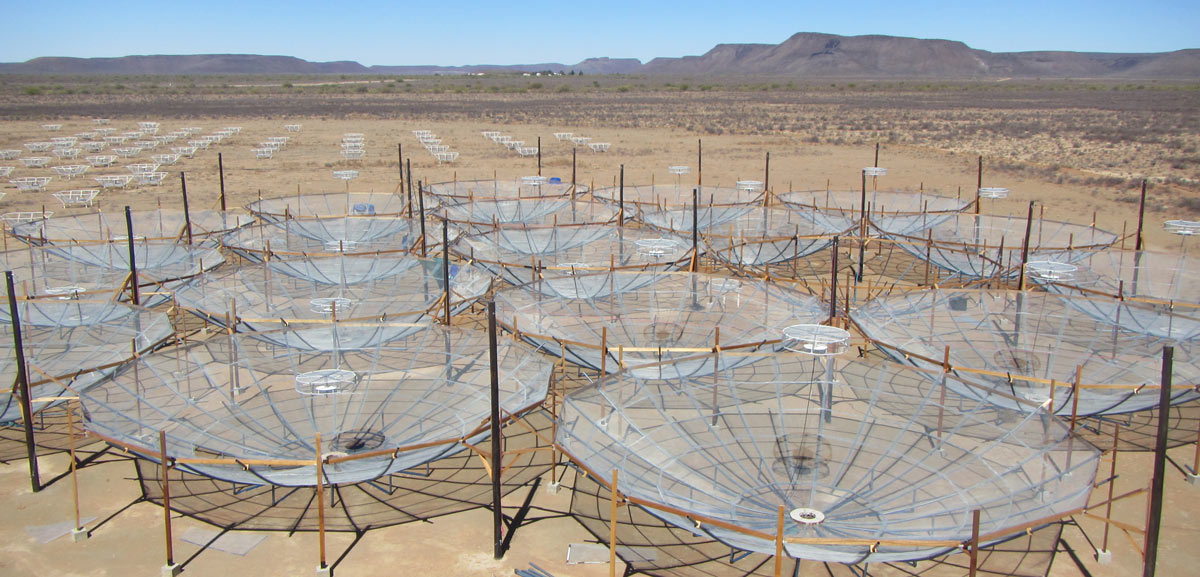Experiment to See the Dawn of Galaxies Gets Big Funding Boost

What did the universe look like as the very first stars and galaxies blazed into existence? An experiment designed to look back at that critical cosmic transition just got a huge funding boost.
The Hydrogen Epoch of Reionization Array (HERA), also known as the "Cosmic Dawn" telescope, will use radio waves to study the hydrogen atoms that filled the universe around the time that the first stars began to form.
The Nation Radio Astronomy Observatory (NRAO) announced last week that the National Science Foundation approved $9.5 million in funding to expand HERA. The additional funding will increase the number of radio antennas by more than 10 times what is currently planned, from 19 to 240, by 2018, according to NRAO. [The Universe: Big Bang to Now in 10 Easy Steps]
About a half a million years after the universe exploded into existence with the Big Bang, the cosmos was filled with a thick fog of neutral hydrogen atoms (meaning the atoms had no electric charge). When the first stars were born (an event sometimes called the "cosmic dawn"), much of the light they emitted was blocked by the hydrogen fog, so this period is often referred to as the cosmic "dark ages."
Over time, the radiation from those stars and galaxies effectively began to clear away the fog: by freeing electrons from those neutral hydrogen atoms (a processes called ionization), the newly formed stars eventually made the universe transparent. This process lasted nearly a billion years and is known as cosmic reionization.
"The ultraviolet light and X-ray emissions from these primitive objects altered the fundamental nature of the universe surrounding them, and HERA is designed to detect these changes," Rich Bradley, a HERA team member and an NRAO senior scientist, said in a statement from the observatory.
Rather than looking for light from those early stars and galaxies, HERA will study the neutral hydrogen that lies between those early cosmic candles, according to a statement from the NRAO. The telescope's radio antennae's will focus on a specific wavelength that corresponds to light "emitted by the slowly vanishing sea of neutral hydrogen that filled the space between the galaxies," the statement said.
Get the Space.com Newsletter
Breaking space news, the latest updates on rocket launches, skywatching events and more!
"We are at a rare juncture in which the most basic measurement of a fundamental cosmological phenomenon — cosmic reionization — has yet to be made. HERA will enable that measurement, showing us never-before-seen details of the early history of our universe,” Chris Carilli, an astronomer with the NRAO in Socorro, New Mexico, and a member of the HERA team, said in the statement.
Observations with HERA may also fill in some information about how the first galaxies came to form galaxy clusters in the later universe, Carilli said.
The HERA array is located in South Africa, and consists of 14-meter-wide (46 feet) antennas. NRAO is a key partner and founding member of HERA. The experiment's international scientific collaboration consists of members from multiple institutes.
Follow Calla Cofield @callacofield.Follow us @Spacedotcom, Facebook and Google+. Original article on Space.com.
Join our Space Forums to keep talking space on the latest missions, night sky and more! And if you have a news tip, correction or comment, let us know at: community@space.com.

Calla Cofield joined Space.com's crew in October 2014. She enjoys writing about black holes, exploding stars, ripples in space-time, science in comic books, and all the mysteries of the cosmos. Prior to joining Space.com Calla worked as a freelance writer, with her work appearing in APS News, Symmetry magazine, Scientific American, Nature News, Physics World, and others. From 2010 to 2014 she was a producer for The Physics Central Podcast. Previously, Calla worked at the American Museum of Natural History in New York City (hands down the best office building ever) and SLAC National Accelerator Laboratory in California. Calla studied physics at the University of Massachusetts, Amherst and is originally from Sandy, Utah. In 2018, Calla left Space.com to join NASA's Jet Propulsion Laboratory media team where she oversees astronomy, physics, exoplanets and the Cold Atom Lab mission. She has been underground at three of the largest particle accelerators in the world and would really like to know what the heck dark matter is. Contact Calla via: E-Mail – Twitter









